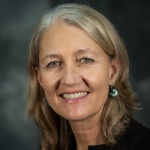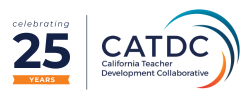Caring for Teachers
I live and work two blocks away from a large public high school and two doors down from a preschool. Often the sound of children squealing or teenagers shouting floats up to my home office. Usually, I relish the noise; it has been five years since I left the classroom, and I still miss being around young people. These last few days, however, I have felt my heart race as I stop what I am doing to listen more carefully: Am I hearing squeals of delight, or fear? Shouts of excitement, or of warning?
It should not be this way.
I have been doing my best to manage the disorientation and devastation I have felt since learning of the horrific violence enacted upon the the chidren and their teachers in Uvalde,Texas; on the eve of the second year anniversary of the murder of George Floyd; coming on the heels of a racist attack and murder in Buffalo, New York; and the hate-provoked killings in Laguna Woods, California.
Stricken by these compounding griefs as someone who works mainly from my office to support teachers and leaders, I worry about how those who are still working in schools are doing. Educators who have survived the pandemic and ridden the ups and downs of this weird school year, who are now in the throes of the year’s conclusion.
I had already been thinking alot about the utter exhaustion faced by many, how teachers were “not okay” as a recent EdSurge piece makes plain. And now all of this. Much too much to bear.
As a passionate proponent of professional development, I have been accused of acting as if we can PD our way out of anything. I don’t actually believe that to be true, but because learning in community is my North Star, I did feel compelled to reach out to leaders at some of CATDC’s partner schools for connection and also information about how I, or we, could help in supporting teachers to be well, to care for themselves as they continue to engage in what one head of school termed “the sacred work of caring for others’ children.”
I spoke with Christina Broderick, Head of School at Riviera Ridge, the day after the shooting in Uvalde. Like so many school heads, she had stayed up late the night before crafting yet another letter about school violence to share with her school community. “I was here first thing this morning with donuts and coffee, and told faculty and staff I was ready to provide what was needed: caffeine, sugar, or just a hug. On a day like today, I just want everyone to know I will do whatever it takes.”
Broderick has made it a priority to bring restorative practices and social emotional learning to the adult level, working closely with Director of Student Wellness & DEI, Dr. Mario Bucio, who led a recent CATDC program on Creating a Culture of Non-Judgement. “As adults we come to school with wounds no one else can see,” Broderick said. “We have been encouraging self-reflection and building capacity among adults for forgiveness, kindness, and empathy. The same things we are looking for in our students.” Having such a foundation of care for faculty and staff has opened the door for more open sharing.
One school leader spoke to me about the importance of practicing restorative leadership in contending with multiple crises, centering the most impacted. After the racially-motivated violence in Buffalo, many schools provided spaces for Black, Indigenous and People of Color to process their grief and anger. Others carved out time for adults and young people to simply gather in silence.
“Silence can be healing,” said Dr. Trina Moore-Southall, Director of DEI at the Brentwood School. “We put so much pressure on ourselves to know all the answers: What do I tell the kids? How am I going to navigate everything in the face of such tragedy? We are not supposed to know how to do this. My message to our faculty was to give grace to ourselves, give grace to others.”
Dr. Moore-Southall also lifted up the importance of honoring all we are feeling: “Emotions are real. As a society we are asked to share only positive emotions. And that is not all who we are as humans.”
This perspective was echoed by Crystal Land, outgoing Head of School at Head-Royce, who also spoke about the need to contribute to a continual sense of community: “What kind of infrastructure, separate from tragic events, can we build to take care of faculty and staff well-being in the long term? Are we allowing space for feelings? We can’t change the world, but we can have a great impact within our spheres of influence. We need to create space for listening and processing.”
Dr. Tashon McKeithan, Executive Director of the Child Educational Center, made it a point to share her own deep feelings of loss with her parent community, and how for her, making connections with others brings healing.
Dr. McKeithan, who recently co-led a CATDC program on the Evolving Practice of Anti-bias Education in Early Childhood, also highlighted the importance of providing resources for supporting the mental health of even our youngest children. “In early childhood education, we don’t think about mental illness,” she said. “The brain is developing the fastest from birth to age five. This is the incubator for trauma which will have a long-term impact. In those 18-short years, there was trauma. Something happened that no one noticed. If you need someone or if you see someone needing something, it is important that you do something.”
Dr. Jeneen Graham, Upper School Principal at St. Margaret’s Episcopal School, expressed a similar sentiment. “We have had these back-to-back incidents involving 18-year-old boys. We have to wonder: How could the outcomes have been different? What can we do?”
She suggested that part of the sadness we are all feeling is hopelessness.
“How do we meet this hopelessness gap with some education? I have been thinking about those kids who are isolated and lonely. And teachers who are seeking tools and support to better address the variability of emotional responses we are seeing since the pandemic: arrested development, loneliness and isolation, real mental health concerns.”
“I am worried about teachers thinking there is nothing they can do, that it’s all bad, perhaps even asking: why am I even in this career? Why would I put my own life at stake? Am I doing anything to make a difference? I want them to know education is the difference maker; they are making a difference in students’ lives.”
My concerns about teachers’ well-being have not been fully assuaged, and I fear for our children, all of us, as gun violence grows unabated. But I feel better knowing more, grateful to glean wisdom from those who were able the time to speak to me. It will be a while before I find equilibrium, but I have some ideas about how to move forward and have been uplifted by the difference these leaders are clearly making in the lives of the young people and adults they serve.

Lisa Haney has served as the Executive Director of the California Teacher Development Collaborative since 2017. Prior to her current position, she worked for 25-years at the Athenian School in many roles, including English teacher, international program director, and humanities department chair. In her most recent capacity as dean of faculty development, Lisa spearheaded a process to develop Athenian’s Standards of Excellent Teaching and design a comprehensive new professional development and evaluation program.
